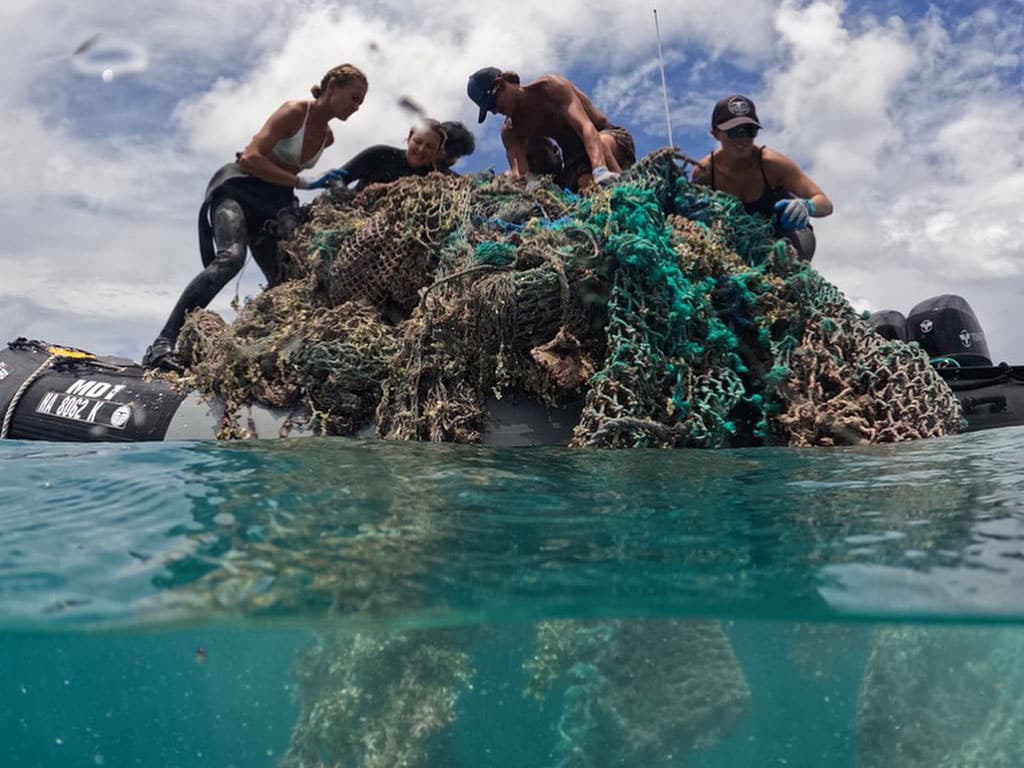
According to the University of Hawaii (UH) News tons of marine debris that was smothering coral reefs and fouling beach areas in the northwestern Hawaiian Islands has been removed.
A group of volunteers did the work, including University of Hawaii at Manoa students and alumni. Participating in the debris removal were 16 divers from the non-profit organization Papahānaumokuākea Marine Debris Project (PMDP), who collected 97,295 pounds of marine debris from Papahānaumokuākea Marine National Monument.
Included in the debris tally was 86,000 pounds of “ghost nets” removed from a single reef. Nine of the 16 dive team members were either UH Mānoa alumni and or current students at UH Mānoa and UH Hilo.
“Ghost nets” are described as large, tangled masses of lost or discarded fishing nets. They can snag on shallow coral reefs, smothering and breaking living coral colonies. Nets also are a hazard for marine wildlife, including fish, sea turtles, seals and birds.
“Seeing this kind of accumulation in such a single small area is indicative of the scale of the global marine debris issue,” said Kevin O’Brien, PMDP president and UH Mānoa graduate.
Maro Reef is where the ghost nets were removed. It is one of the most diverse coral reefs in Hawaii, harboring 37 coral species. It’s located in Papahānaumokuākea Marine National Monument, a string of remote and uninhabited islands in the 1,300 miles of the Hawaiian Islands chain. The shallow parts of the reef (than 10 feet) that marine debris accumulated on is about eight miles long, and supports a vibrant ecosystem.
O’Brien described the amount of ghost nets removed from the reef as equal to taking a walk through New York’s Central Park and nearby area, and finding trash equal to the weight of a commercial airliner.
Divers swim in patterns over the reef to search for ghost nets. When a net is located, divers carefully cut the net free from the reef to avoid further damage. Then it’s hauled them by hand into a boat. Nets vary in size, but may weigh upwards of 2,000 pounds each.








